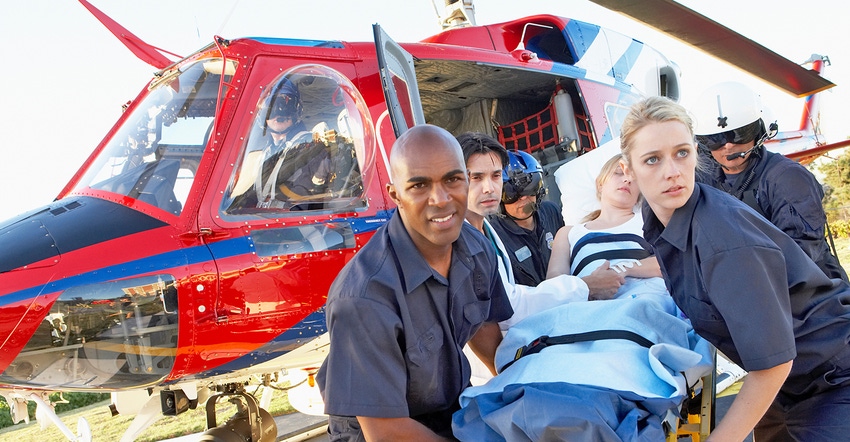March 12, 2018

In 1992, my wife was flown by air ambulance to the Twin Cities after a car accident. A young man ran a red light on a county highway and hit her broadside. She survived. He died.
I can’t remember what the life-flight cost, and I doubt if someone had asked me at the time I would have cared. She just had to go.
Fortunately, our insurance covered the cost. I paid the deductible and maxed out on our out-of-pocket expenses for the year, but that was it.
Some North Dakota families haven’t had the same experience with air ambulances. They’ve been saddled with big bills following flights to hospitals in Bismarck, Fargo, Rochester or the Twin Cities, partly because they were transported by air ambulances that didn’t have a contract with their insurance company and they weren’t asked which air ambulance should be used.
Between 2013 and 2017, the North Dakota Insurance Department received 34 complaints about air ambulance charges. The charges totaled $1.86 million. Claimants reported being billed amounts ranging from $20,000 to $66,000. The average cost of an air ambulance flight was $57,000. Jon Godfread, North Dakota insurance commissioner, says he expects that many more people have complained to the air ambulance providers themselves, and to their insurance companies about the bills.
“This not just a North Dakota problem,” Godfread says. “It is happening all over rural America. Our accidents don’t happen a few blocks from the nearest hospital.”
The North Dakota Legislature has tried to address the issue. It passed a new law that took effect Jan. 1 requiring hospitals to notify a patient in a non-emergency situation which air ambulance providers have contracts with the patient’s health insurance company. It’s a warning that should spark discussion about which mode of transportation is best for the patient — right now, and when the bill comes due.
The law also requires all health insurance plans issued in North Dakota to reimburse out-of-network air ambulance providers at a rate that is equal to the average of the in-network rates the patient’s insurance company has with in-network air ambulance providers in the state. Furthermore, this payment is considered a full and final payment for air ambulance services billed to the patient.
This means that, so long as you have a health insurance plan issued in North Dakota, you will not receive a big bill for air transportation. But if you have insurance, you will likely only be faced with a bill that equals your maximum out-of-pocket expense for the year, not $40,000, $60,000, or even more as some North Dakotans have experienced.
Unfortunately, notification and claim adjustment may only be a Band-Aid on a wound that needs a tourniquet. The answer, in my opinion, is universal health care insurance. Everyone should be able to get air ambulance service when it is needed and not have to declare bankruptcy if they survive their health crisis. I’m clearly in the minority on this. But I doubt anyone can truly appreciate how vital air ambulance service is until they personally have to say, “Just go.”
Air ambulance guide
The North Dakota Insurance Department’s Air Ambulance Participation Guide shows which air ambulance providers are in-network with three of the main health insurance carriers in North Dakota. This information is available to consumers on the department’s website, nd.gov/ndins. Also, health care providers must make the information available to patients prior to being transported by air ambulance in a non-emergency situations.
You May Also Like




